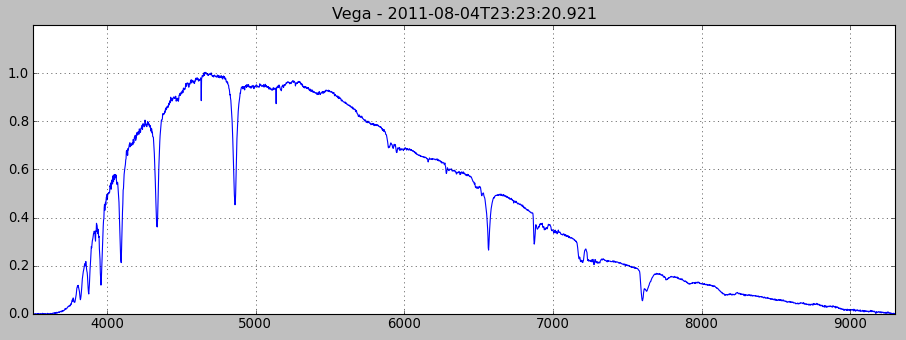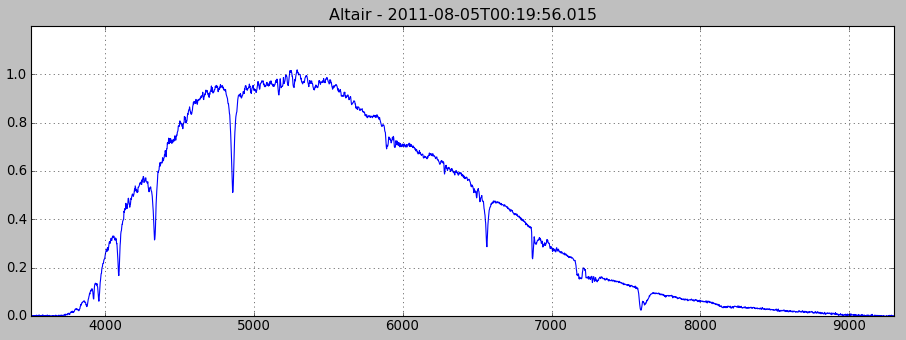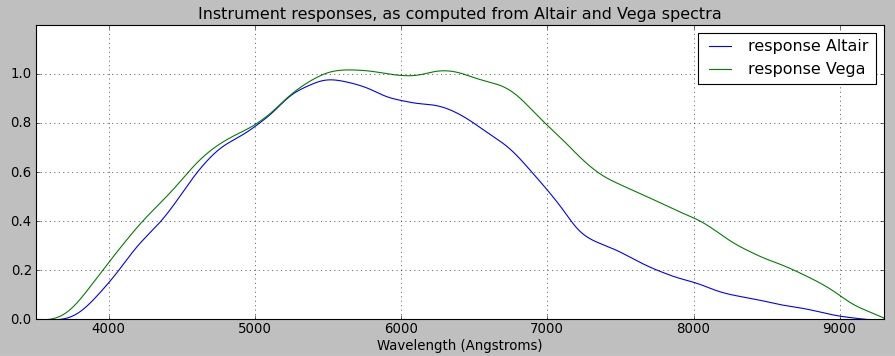OHP 2011 - Spectroscopy Workshop
night 5 (from 04-08 to 05-08)
Measurements with a LISA spectrometer
Instrument = Vixen VISAC 200mm F/D=6.4
Camera = Atik 383L+ with DMK camera for guiding (kindly provided by V. Bouttard)
Spectro = LISA with 35 micrometer slit
Software = Audela v2.0
Observers = Alexandre Billard, Thierry Godard, Jerome Caron
Vega and Altair --> click on the plots to get the .dat file
Correction of the instrumental response has not been made.
The spectra have been processed with Python scripts, except for the spectral calibration that was made with Visual Spec.
With a short exposure, only the red lines of the Neon lamp are visible.
This makes the spectral calibration very inaccurate in the blue part.


The instrument response has been calculated for both stars with Visual spec, using the reference profiles provided for A0V (Vega) and A7V (Altair)
spectral types.
It turns out that the responses are very different for both stars, a thing that I cannot explain !! As long as I don't have a better understanding
of the calibration of instrumental response, I cannot go further.

M57 (ring nebula) and NGC 6826 (blinking nebula)
M57 = dark and flat corrected, standard average of 4 * 300 sec
NGC6826 = dark and flat corrected, standard average of 6 * 300 sec
Spectral variations of flat signal are removed before flat correction
NGC6826

M57

It's interesting to compare both spetra. Assignment of chemical species to emission lines has been made with the help of
this document. The O-I emission from the sky (air glow) around 5580 Angstrom is very strong.
There are also two weak and wider air glow emission lines on both sides of it (the one on the right is easier to see).
Atmospheric absorptions due to Oxygen A and B bands are visible in the red part of the spectrum (respectively around 7600 and 6800 Angstroms),
thanks to the induced attenuation of the central star spectrum for NGC6826.






